Yesterday there were some sightings too far north to reach from Fernandina Beach. Luckily for us, we were able to trailer the boat to Brunswick, GA to get closer to these most recent sightings. It was our first trip out of Brunswick this year. In fact, we used a brand new boat launch underneath the Sidney Lanier bridge and then traveled the short distance out the Brunswick River into the Atlantic. Along the way, we got a nice view of Jekyll Island to the South, and St. Simons to the North.

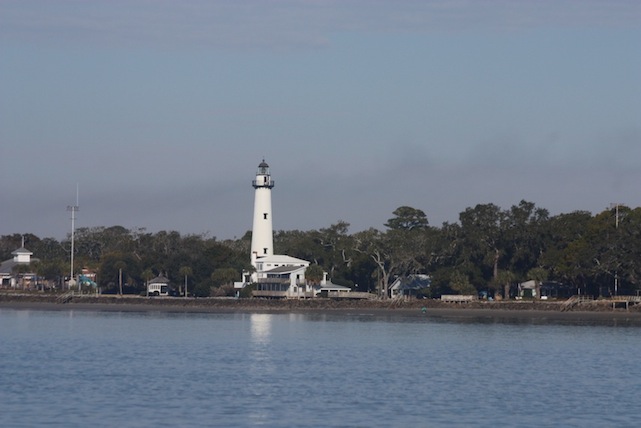

One of the advantages of spending a lot of time on the water looking for whales is you see a lot of other interesting things as well. While underway we’re always scanning the horizon for signs of whales, but it is a perfect way to spot some cool birds as well. Look for a blog post later about some of the other creatures we sight on our trips, but for now enjoy some of these birds we spotted on the water today.
Before we even left the river, we spotted some American White Pelicans (Pelecanus erythrohynchos). Grace noted that these pelicans are always seen on the marsh side of the shore and never on the ocean side. We often see Brown Pelicans (Pelecanus occidentals) on the beach or out offshore . Below are pictures of both species for comparison.
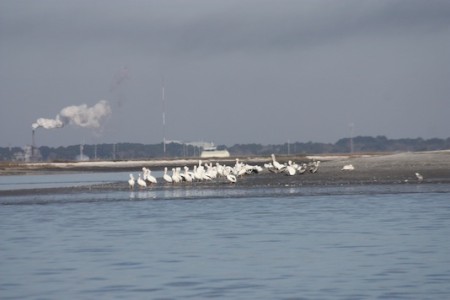
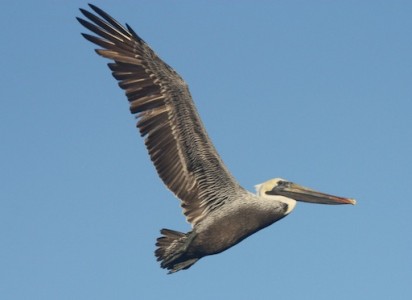
It wasn’t a bird or a whale, but one of our first sightings today was a mylar balloon. Discarded balloons often get blown or washed into the ocean and actually pose quite a threat to wildlife. Eventually, the printing on these balloons comes off and a transparent polymer is left that can look like gelatinous invertebrates (such as jellies and other similar animals). Sea turtles can consume these types of animals and have been found with balloons in their stomach [2]. (We do see turtles on our trips sometimes; look for more information on these fascinating animals in a later blog post.) Plastic debris is increasingly recognized as a source of mortality for all sorts of marine life by entanglement, accidental ingestion, and even direct absorption of microplastics and other chemicals added to the polymers during manufacture. Some researchers have called for plastics to be labeled toxic waste, because of the chemicals they can contain, to tighten disposal regulations, and to free up Superfund money for cleaning up plastic pollution in aquatic environments [3]. You can listen to the author speaking on Living on Earth, a radio show distributed by PRI [4]. Though we could never get them all, when we see balloons we try our best to pick them up and dispose of them on land, which you can see Nathan doing below.

A short time later, we passed three Razorbills (Alca torda). This is a beautiful Alcid, the group of birds that includes Puffins and the now extinct Great Auk. Razorbills tend to be a colder water species and aren’t a very frequent sight for us. Pete got a great picture as we passed by. These birds look similar to two species of Murres (also Alcids), but has slightly different plumage and a deeper bill. Recently there was an unusually large number of Razorbill sightings in the southeast U.S. A system maintained by the Lab of eBird published a short article on their website about this [5]. Anyone can submit sightings to eBird and volunteer experts help to validate the sightings. A massive amount of data has been collected and is freely available to scientists and anyone else interested. We’ve uploaded our sightings to eBird to contribute to what is known about the range of this fascinating bird.
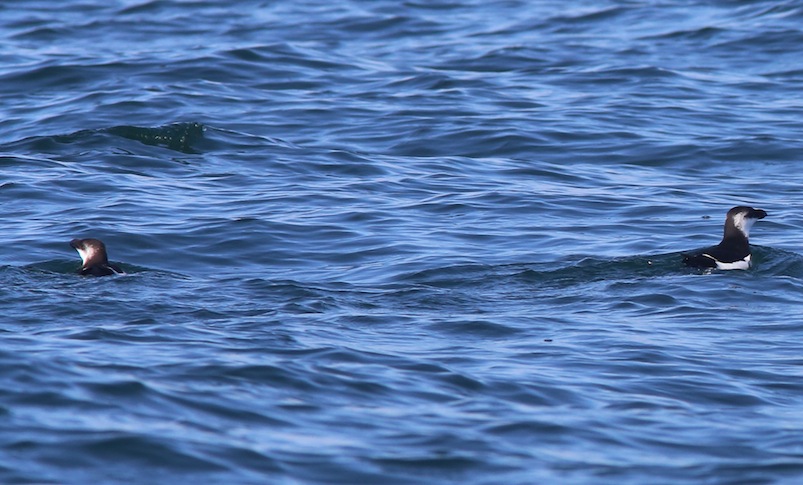
We spotted two Parasitic Jaegers (Stercorarius parasiticus) on our trip today. One was in the act of kleptoparasitism, a common feeding technique for Jaegers. As their name implies, Parasitic Jaegers often parasitize smaller birds such as terns and some species of gulls by stealing their food (that’s the “klepto-” part). This involves a lot of chasing and harassing and sometimes the targeted bird will drop its catch in order to get away, leaving a meal for the Jaeger. You can watch this happening on this youtube video. Our looks were distant so we didn’t get great photos, but you can check out some photos or even listen to Jaeger sounds at the Audubon website. As the website points out, Parasitic Jaegers breed in the Tundra, but non-breeding birds range widely in the both hemispheres.
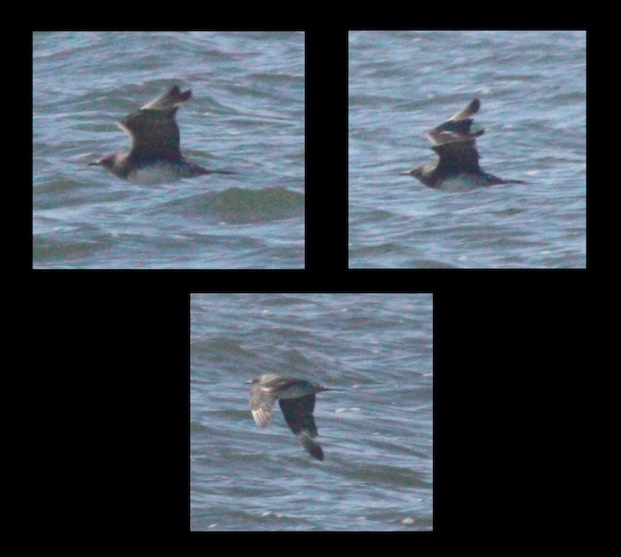
As we traveled today, we saw quite a view feeding frenzies of Northern Gannets (Morus bassanus). These birds are in the Sulidae family, which also holds the famous Blue-Footed Booby. You can see the resemblance especially well in the head. Gannets dive from great heights into the water in order to catch small schooling fish. When there are a lot of fish around, huge groups of Gannets can produce spectacular views for us on the boat. Sometimes we see dolphins feeding on the same fish, surfacing under a cloud of birds. The birds can be seen from quite far away, especially when there are large numbers, and so this is a great way to find feeding animals of all sorts.



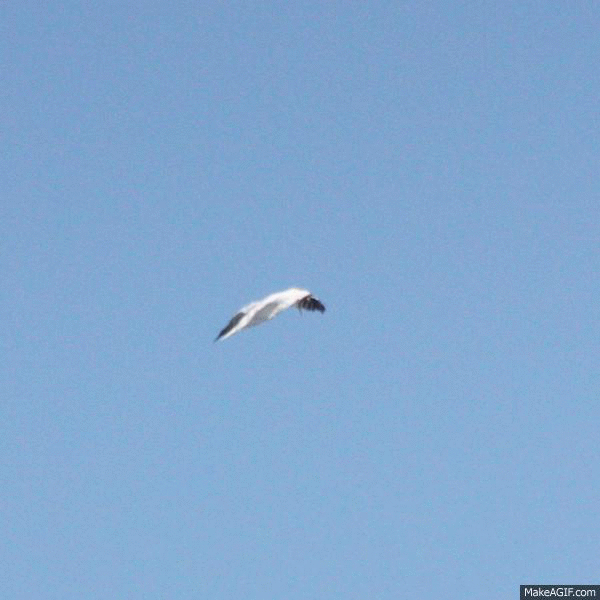
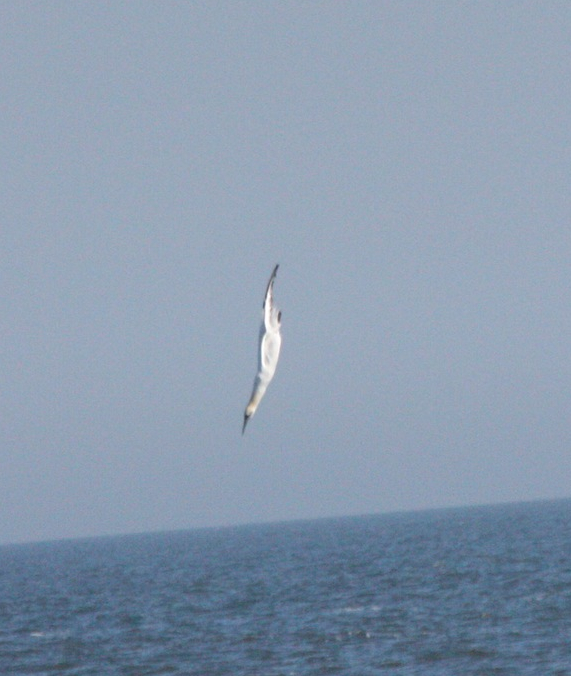
Thanks for reading, and look for more posts soon as we continue the field season! See below for some links and references mentioned in the post.
References and links
[1] Hain JHW, Hampp JD, McKenney SA, Albert JA, Kenney RD. 2013. Swim Speed, Behavior, and Movement of North Atlantic Right Whales (Eubalaena glacialis) in Coastal Waters of Northeastern Florida, USA. PLoS ONE 8(1): e54340. doi:10.1371/journal.pone.0054340
[2] Tomás J, Guitart R, Mateo R, Raga JA. 2002. Marine debris ingestion in loggerhead sea turtles, Caretta caretta, from the Western Mediterranean. Marine Polution Bulletin. 44: 211-216.
[3] Rochman CM, Browne MA, Halpern BS, Hentschel BT, Hoh E, Karapanagioti HK, Rios-Mendoza LM, Takada H, Teh S, Thompson RC. 2013. Policy: Classify plastic waste as hazardous. Nature 494(7436): 169-171.
[4] Living on Earth, March 8th, 2013: The Hazards of Plastic Waste
[5] Razorbills invade Florida
[6] Youtube video of a Parasitic Jaeger in the act of kleptoparasitism.
[7] Parasitic Jaeger on the Audubon website.